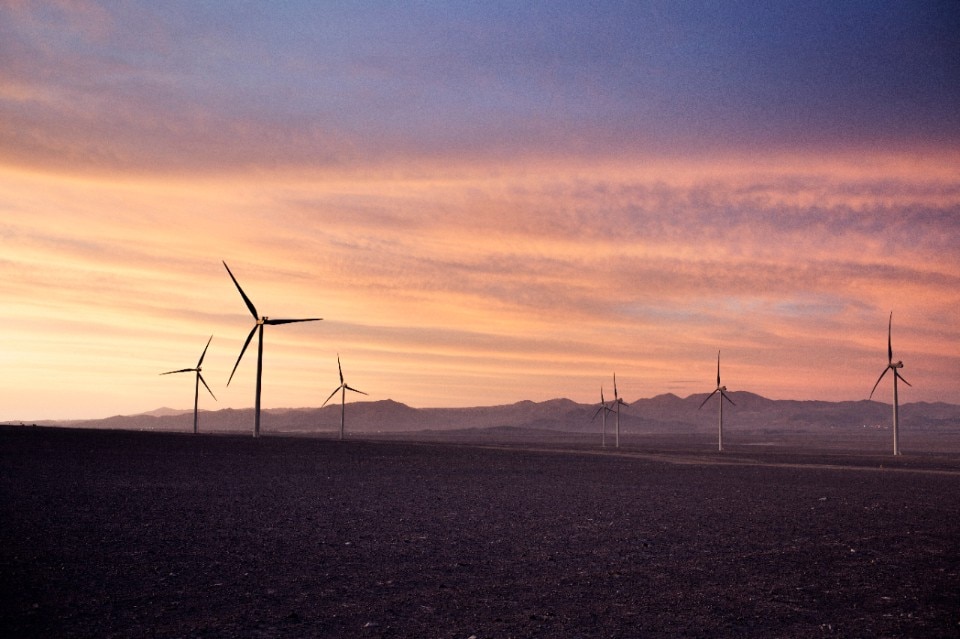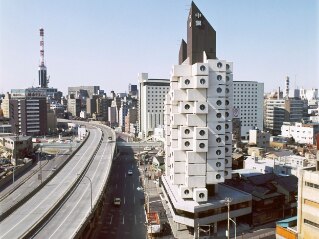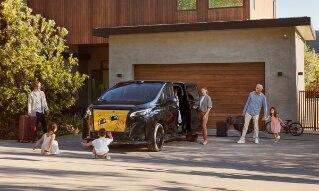On a Saturday in early September in Berlin, the streets near Ostkreuz, a major train station in the eastern part of the city, pulsate with thousands of people swaying to electronic beats. What looks like a rave is actually a political demonstration. The 7,000 participants have gathered to express their opposition to a project that could drastically change the face of the German capital.
A stretch of highway, to be exact: the “17th section of the city highway” (17. Bauabschnitt der Stadtautobahn), more commonly known as the A100, named after the section of highway it is supposed to complement, has sparked significant debate. Seen from above, the A100 looks like a long river of asphalt and concrete. Starting in the historic working-class Wedding district in the northwest, it skirts the western part of the city for about 21 kilometers before winding its way southeast into the culturally diverse Neukölln neighborhood. It is a quintessential example of twentieth-century infrastructure, begun in the 1950s and left incomplete due to the tragic division of the city.
Currently, the project’s supporters are focusing on extending the existing section by a total of 7 kilometers. Of these, 3 kilometers are already under construction and are expected to be operational by 2024, forming the so-called 16th section. The remaining 4 kilometers, part of the aforementioned 17th section, are currently in the planning phase. In this context, a fierce battle is unfolding, one that some observers do not hesitate to call historic.
Once again, the German capital is at a crossroads. After reinventing itself over the past few decades to become a symbol of the dreams and ambitions of a generation of young Europeans, Berlin finds itself fighting on multiple fronts. Squeezed between a worsening real estate crisis and a broader slowdown in the German economy, the city is experiencing severe political instability.
Italian writer Vincenzo Latronico, a Berliner by adoption, is a meticulous narrator of the city’s metamorphosis. “One possible interpretation of the ongoing changes is that we are witnessing the end of Berlin’s exceptionalism: the exceptionally low costs, the exceptionally high tolerance, on which the city has built its public identity over the past two decades. So does the A100 project fit into this broader normalization of Berlin, a theme Latronico explores in his latest book, La chiave di Berlino? “The A100 represents a vestige that mirrors a largely outdated notion of the city. Rather than gentrification, I would describe it as suburbanization”, Latronico replies.
The A100 can be read as a confirmation of the end of Berlin’s exceptionalism. If it was once argued that Berlin was different from the rest of Germany, with the addition of this new section of highway, the city will in some ways be more like the rest of the country.
Vincenzo Latronico
To understand the significance of the A100, it is necessary to look at the German political landscape. Historically and ideologically, the Christian Democrats of the CDU and the liberals of the FDP have consistently positioned themselves as champions of the German automotive industry – the heart and driving force of the national economy. And while Berlin is currently governed by a CDU mayor for the first time in more than two decades, the federal Transportation Ministry, responsible for funding the A100, is firmly in the hands of the FDP. According to Latronico, this explains the strong political support the project enjoys: “In this sense, the A100 can be read as a confirmation of the end of Berlin’s exceptionalism. If it was once argued that Berlin was different from the rest of Germany, with the addition of this new section of highway, the city will in some ways be more like the rest of the country”.
But what are the arguments of the opponents of the project, what are the arguments of its supporters? What could be the real impact of a project that is estimated to cost at least 1.5 billion euros for the 17th district alone? In August 2022, Stefan Evers, Berlin’s current chief financial officer and secretary of the local CDU, articulated his party’s stance in an article published in the Tagesspiegel. Proponents of the project, a position supported by Evers, argue that the need for the 17th section stems from the completion of the 16th section, which is scheduled for 2024. They claim that only by continuing the project can the full benefits of the A100 be realized, optimizing traffic flow and reducing the volume of vehicles passing through neighboring areas.
But Evers takes it a step further, attempting to redefine the terms of the debate. He argues that the A100 could potentially serve as a prototype for a new type of highway, one that is electric-mobility-friendly and equipped with “smart” features. A Klimaautobahn, designed with a real focus on climate change, incorporating solar panels and advanced infrastructure. Is this a public relations ploy, an attempt at greenwashing, or a visionary idea? For opponents of the project, the answer is clear. “He who sows roads will reap traffic”, asserts Sophie Becker, professor of sustainable mobility at the Technical University of Berlin. In an interview with Deutschlandfunk Kultur, Becker explains that diverting traffic to other neighborhoods would only shift the problem. The solution lies in strengthening public transportation, promoting cycling, and rethinking urban logistics. The ultimate goal is to create cities that are more people-friendly and less car-friendly.

Ironically, it may not be the fight against climate change or the pro-car lobby that ultimately decides the fate of the A100, but rather the ravers gathered around Ostkreuz on a Saturday in early September. If built, the 17th section of the city highway would wipe out at least five historic Berlin clubs in one fell swoop, including such famous names as Renate, ://about blank, and Else. At a time when the importance of the techno subculture for Berlin’s tourist industry is being recognized even by conservative parties like the CDU or FDP, this seems to be the real issue. So much so, in fact, that the CDU itself has suggested burying the highway and rebuilding the destroyed clubs on the land thus cleared.
Lutz Leichsenring, a longtime spokesman for Clubcommission, the organization that represents the interests of Berlin’s club industry, is not convinced by this proposed solution. “Clubs have grown organically in their surroundings over many years and cannot simply be uprooted and relocated”, the association states emphatically on its website. It’s a battle between the underground and the highway, a clash reminiscent of the historic struggles of the 1960s, as Leichsenring himself points out in an interview with the Backstage PRO portal. “It’s hard to imagine today, but Oranienplatz in Kreuzberg was originally supposed to be a highway junction. At the time, activists in the squatter movement successfully thwarted those already well-defined plans; we want to do the same”. The events of the coming years will determine whether Leichsenring’s gamble will ultimately prove successful.
Opening image: Berlin, Germany, September 2, 2023. Photo Dimitri Frixou on Unsplash

Tomorrow's energy comes from today's ideas
Enel extends the date to join the international “WinDesign” contest to August 30, 2025. A unique opportunity to imagine the new design of wind turbines.











